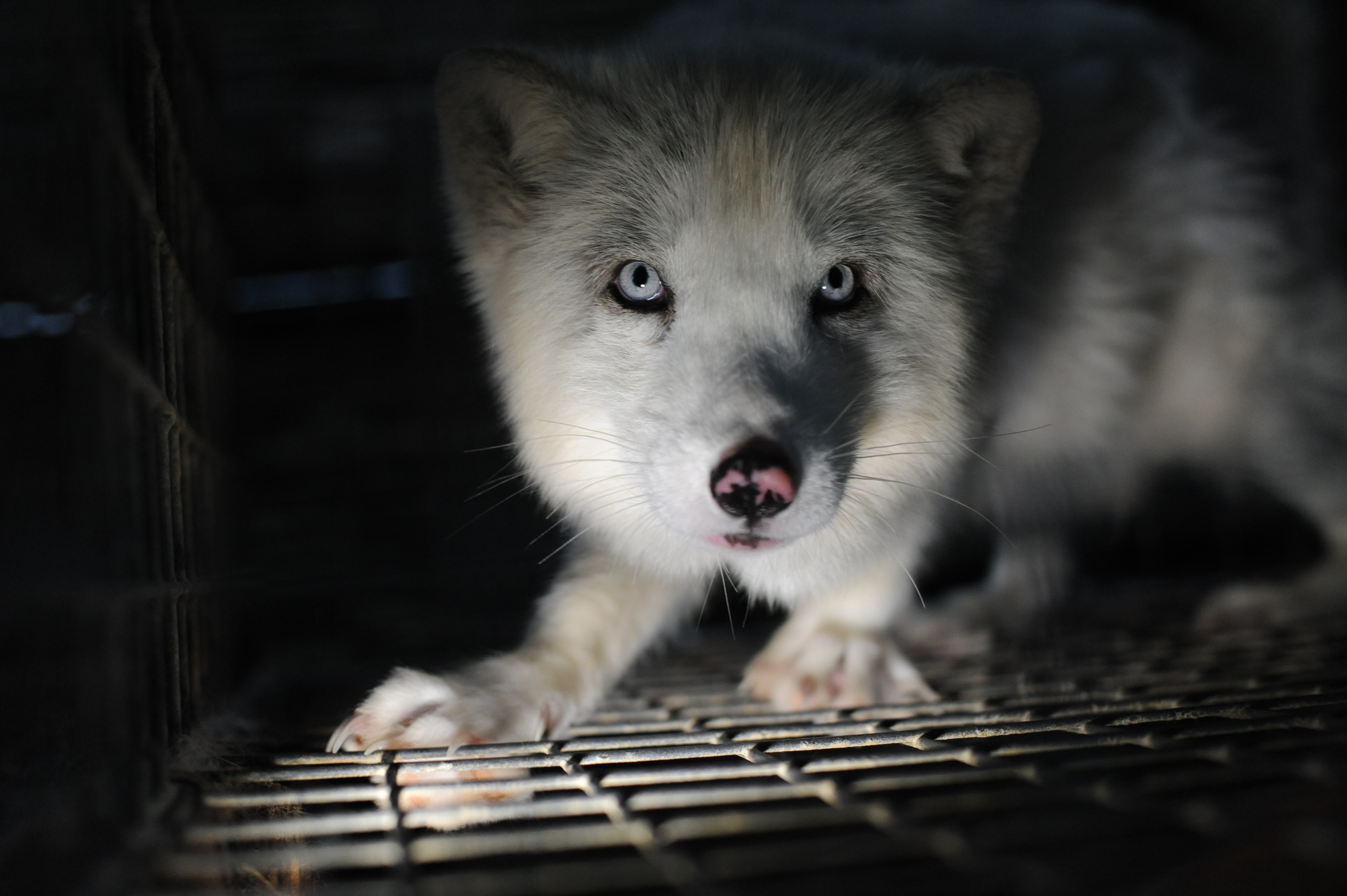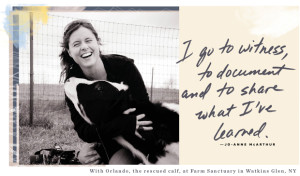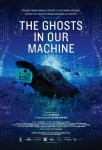 I was recently finally able to attend a screening of the hotly anticipated documentary feature film “The Ghosts in Our Machineâ€, which has been making the film festival circuits and plans for an American-wide release later this year. This is a truly significant film not to be missed. And I’m not just saying that for the select niches of Canadian film lovers or documentary-philes or whatever. What I am saying is that everyone on this planet should see this film, as it affects each and every one of us who live here in this world where we human animals relate to non-human animals, be it in direct forms or not so conspicuously. Non-human animals play various roles in our daily lives which must not go disregarded.
I was recently finally able to attend a screening of the hotly anticipated documentary feature film “The Ghosts in Our Machineâ€, which has been making the film festival circuits and plans for an American-wide release later this year. This is a truly significant film not to be missed. And I’m not just saying that for the select niches of Canadian film lovers or documentary-philes or whatever. What I am saying is that everyone on this planet should see this film, as it affects each and every one of us who live here in this world where we human animals relate to non-human animals, be it in direct forms or not so conspicuously. Non-human animals play various roles in our daily lives which must not go disregarded.
Yes, this is a Canadian film, directed by Liz Marshall (who we interviewed on the Animal Voices radio show earlier this year), and told through the eyes of Torontonian photojournalist Jo-Anne McArthur (who we also interviewed on the show, last year). Jo-Anne makes it her life mission to “make people aware of what is happening to animalsâ€. She is a true animal rights activist who has dedicated her life to this cause in such a unique way. That way is by documenting the atrocities that happen to animals, by humankind, via the medium of still visual images. She is a photographer who risks whatever it takes to capture the images so that they can make it out into the world for all to see and learn from.
In this film, we follow Jo-Anne throughout her work of capturing the experiences of so many different kinds of exploited animals from the perspective of an observer (via her camera lens). The film does not discriminate in presenting a myriad of different animal images, and thus issues, from the beagles from research labs, to foxes on a fur farm, to farmed pigs for consumption, to marine animals at an aquarium. The lack of discrimination between species sends a discerning message that all animals deserve the right to be free from human exploitation. Species doesn’t matter; what matters is the basic right to respect. And looking into the earnest eyes of any of these creatures, as we do in the film, should certainly send that message as we connect and relate, being to sensitive being. The images are poignant, thought-provoking, and memorable.
 By way of her camera and pursuing her mission, Jo-Anne has seen some terrible barbarities in her life, and she speaks of her PTSD and work as a “war photographer†when it comes to documenting the war inflicted on non-human animals by us humans. She says that there is a real inequality between the treatment of human vs. non-human animals, and this statement is starkly supported by the film’s insights into the dark and dirty industries that use animals for profit, soaking up their worth of body parts and services and then spitting them out like they are garbage. The ghosts are the animals who are lost in the mechanisms of the man-made “machine†of use and abuse.
By way of her camera and pursuing her mission, Jo-Anne has seen some terrible barbarities in her life, and she speaks of her PTSD and work as a “war photographer†when it comes to documenting the war inflicted on non-human animals by us humans. She says that there is a real inequality between the treatment of human vs. non-human animals, and this statement is starkly supported by the film’s insights into the dark and dirty industries that use animals for profit, soaking up their worth of body parts and services and then spitting them out like they are garbage. The ghosts are the animals who are lost in the mechanisms of the man-made “machine†of use and abuse.
The premise of the film sounds dismal, but there is some light in this fury of sadness. Several visits to the beloved Farm Sanctuary are the highlights of the film, where we get to observe many rescued animals in a happy setting, who have been broken out of misery in order to live out the rest of their lives in peace. Jo-Anne returns to this animal haven many times, and it is her place of solace, to regroup and renew her strength as she continues back onto the path of war.
 Getting her photos out there into the public makes up another facet of the story. In a meeting with a photo agency, the agency reps tell her that there isn’t much of a market for such photos as long as no one wants to cover the stories (and this is what she is repeatedly told). So how are you supposed to get the pictures out there if no one will take a step forward in that direction?
Getting her photos out there into the public makes up another facet of the story. In a meeting with a photo agency, the agency reps tell her that there isn’t much of a market for such photos as long as no one wants to cover the stories (and this is what she is repeatedly told). So how are you supposed to get the pictures out there if no one will take a step forward in that direction?
Fortunately, Jo-Anne has a book deal with a sympathetic publisher who is ready to put out a volume of her photographs called We Animals (to be published later this year). Plus, this film is out and will be making the major circuits in the near future, with plans to be pursue a Best Documentary Film Oscar award.
It’s media like books, photographs and films that are the key to making change in the world, because as enormous of a cultural shift it may seem to stop so much exploitation of animals, I believe that it happens with people and it starts with education. The tides are rapidly changing in the realm of the mistreatment of animals, and we can take it further by encouraging people to watch engrossing and enlightening films such as this. You feel for the animals, and you feel for Jo-Anne as you follow her journey throughout, and this documentary has the power to convert attitudes towards our fellow creatures as their plight and harm is captured for our eyes to see, our minds to ponder, and our hearts to open far and wide.
Update: The film can be seen here on YouTube now!


I can’t thank you enough for your bravery and love of animals and what you are doing. I can’t even imagine the horror you have experienced over the years and I just hope people will have the courtesy to at least view your film for as long as they can stand it because you certainly did not enjoy doing this work; nobody would, but the message has to get out about what is happening to animals/poultry, all animals and you are doing this. I pray it will resonate with people and that they will change their lifestyle and stop EATING our fellow living beings..it is disgusting and so many people don’t want to change..well, after seeing this if they don’t change they are monsters. Thank you again for all you do.
Sincerely,
Mary Steers